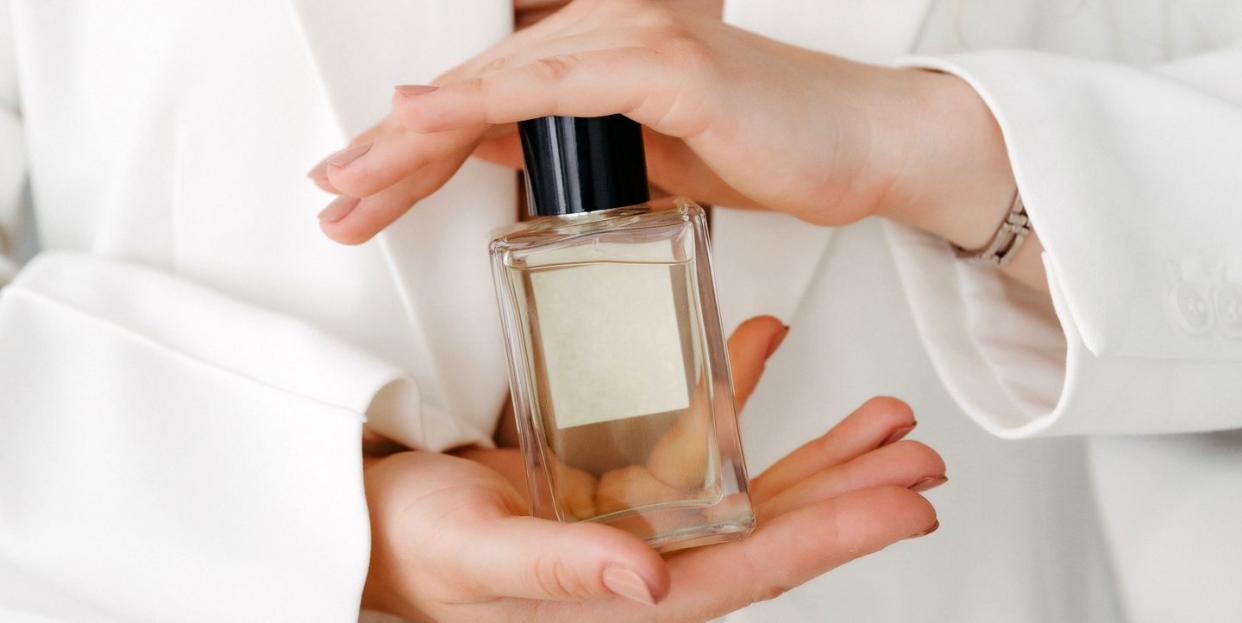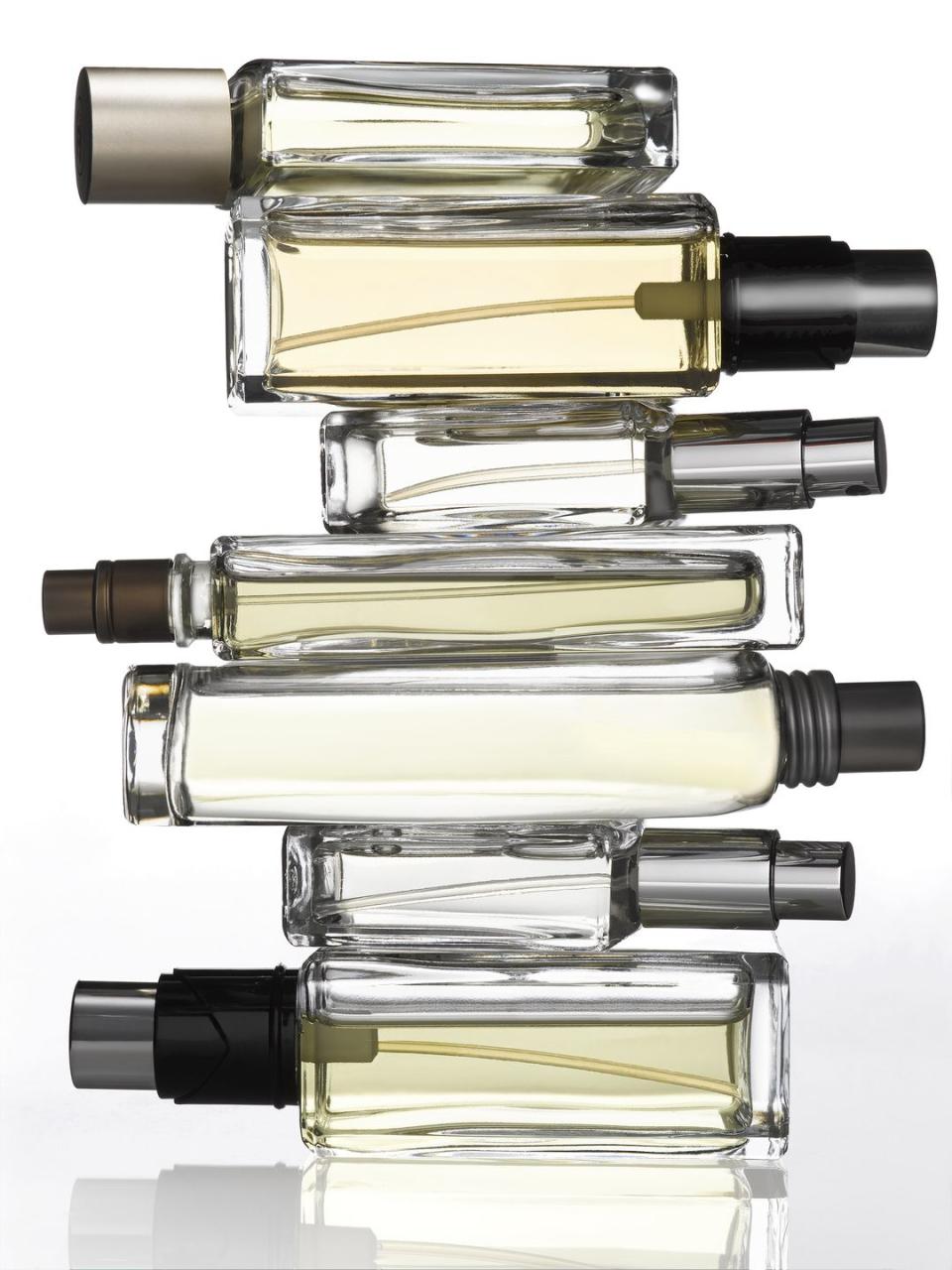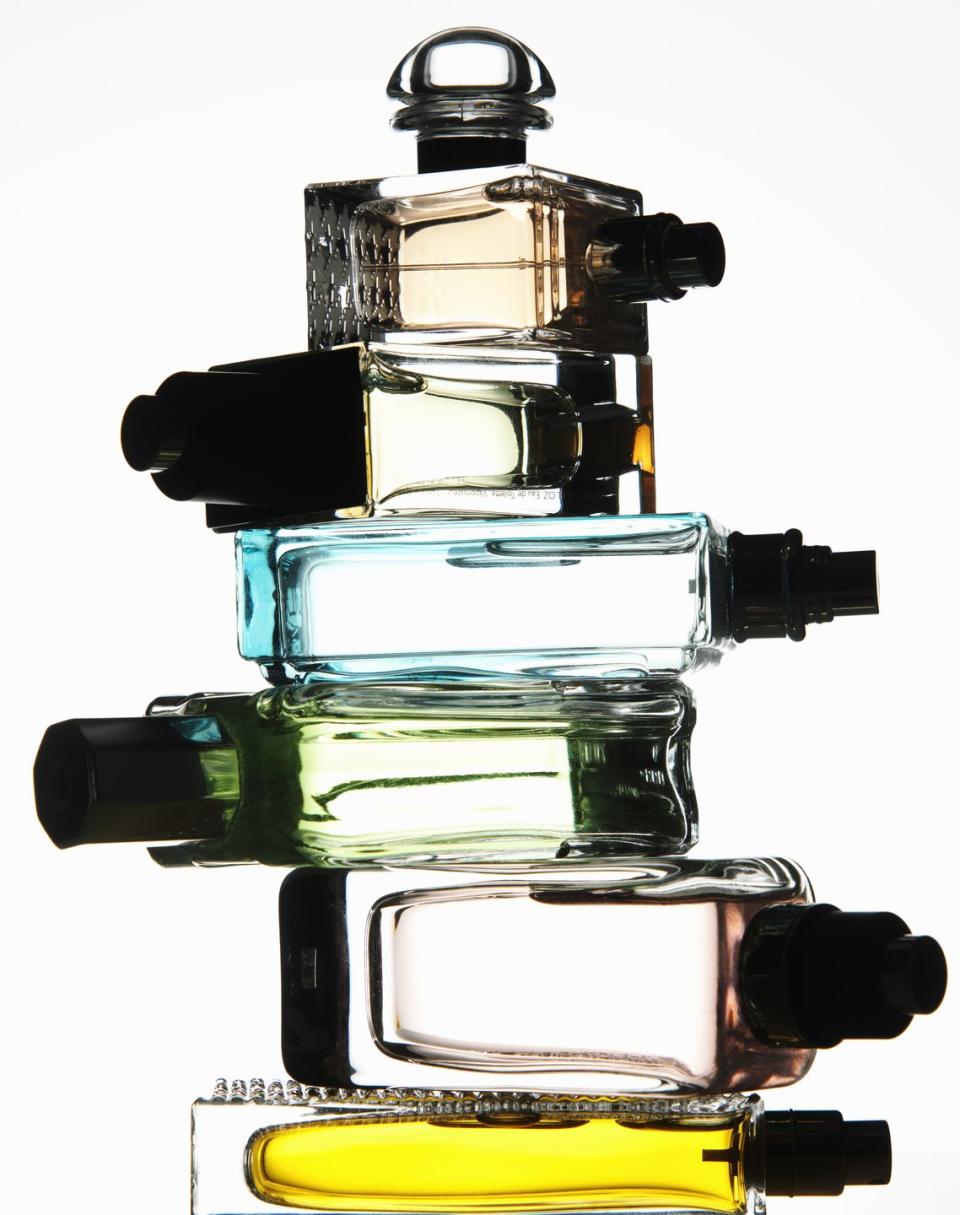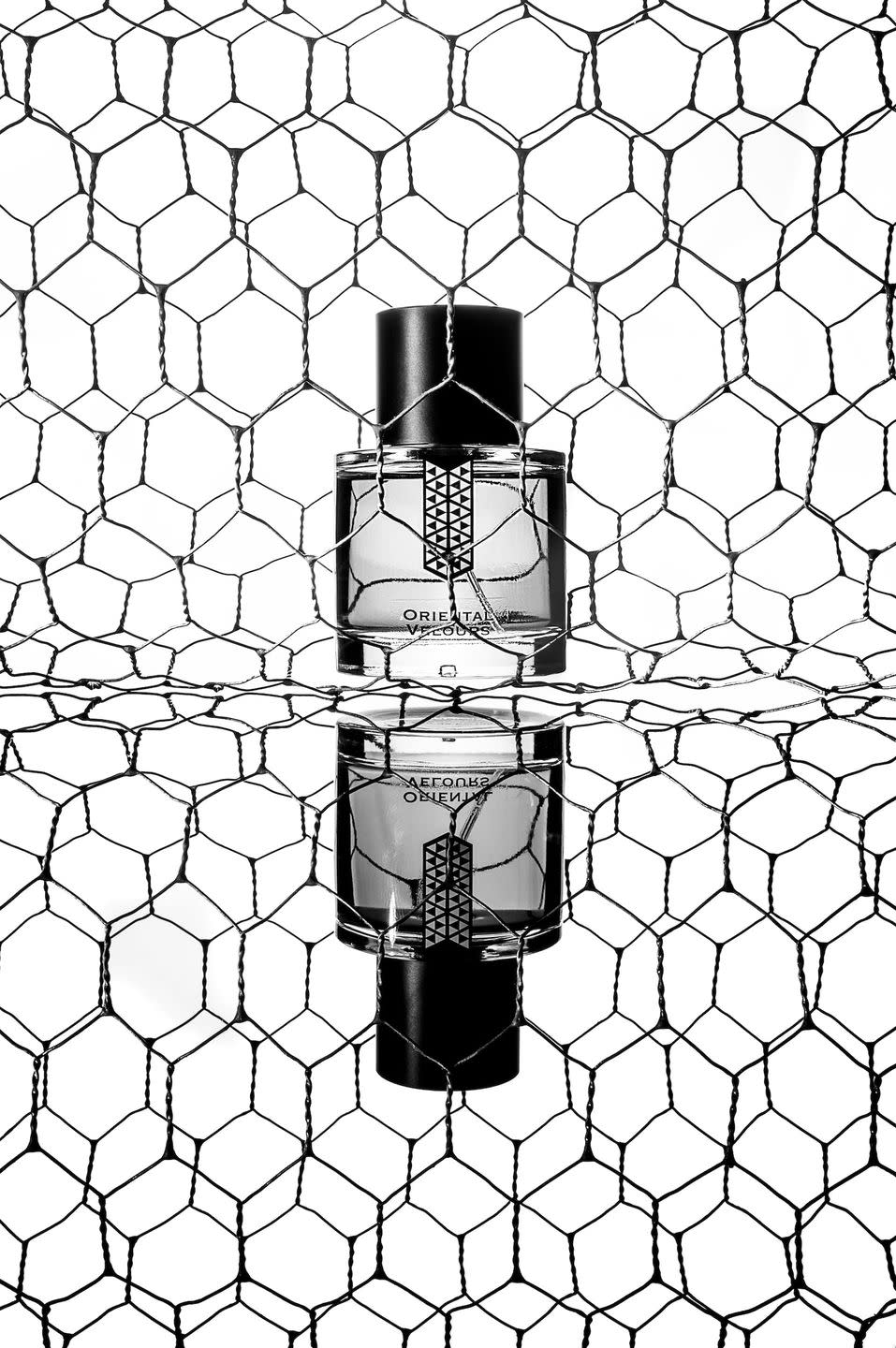Why Is the Fragrance Industry So Obsessed With Secrets?

"Hearst Magazines and Yahoo may earn commission or revenue on some items through these links."
The fragrance industry is shrouded in mystery. Do you know the perfumer of your signature scent? Do you know the actual notes? The specific concentration of vanilla? Fragrance formulas have been kept under lock and key for years, treated less like ingredient lists and more like industry secrets. And for years, this handshake agreement to sworn secrecy was enough to keep iconic perfumes from being knocked off. But those days are long gone.
You’re not crazy: Everything—and everyone—is starting to smell the same. The fragrance industry is in its dupe era, as the kids would say. Allure recently published an excellent deep dive into the sudden rise of copycat fragrances. The gist is that new technologies now make analyzing—and duplicating—fragrances far easier than ever before. And as there is absolutely no downside to stealing someone else’s work—intellectual property law covering smells is shockingly convoluted, and fragrance formulas remain unprotected in the U.S.—the temptation is too great to resist.
Search a perfume once on Google and your social media feed will be inundated with ads for companies dedicated to creating scents “inspired by” other scents. Fragrance snobs love to lament that these dupes are ruining the industry. But are they? In reality, fragrance is booming. It’s hard to find a definitive number, but over 3,000 new perfumes were launched last year, with projected worldwide sales north of $40 billion. It’s a great time to be in the perfume business and a great time to be a fan of smelling really, really good.
But it’s naive to think that the wave of radical transparency that came for cosmetics first, and then skincare, is going to pass right over perfumes. The more-is-more, 28-step skincare trend was immediately followed by the clean beauty wave and embrace of #skinimalism. This will happen to fragrance, too, with consumers—once blindly swayed by marketing and trends—demanding to know more about raw ingredients, perfumers, and sustainability initiatives (or the lack thereof). If heritage and luxury fragrance brands want to protect their fragrances and maintain relevance, they’re going to have to get honest—really, really honest. Tell us, the people, why your scent is truly better than the rest.

“Perfume has been perceived as an inaccessible, elitist industry. A move towards openness and transparency means an end to gatekeeping,” says perfume influencer and activist Tracy Wan, who posts about fragrance at @theinvisiblestories on Instagram. “To understand how perfume works—from who made the scent you love to what ingredients went into it—is not to strip away its magic, but instead, to love it more. It’s a form of literacy that entrenches you deeper in the story. I don’t see a downside to that.”
Gabe Oppenheim’s The Ghost Perfumer: Creed, Lies & the Scent of the Century, released in 2021, exposed how little the public actually knows about the role of perfumers and how a perfume gets to market. Interestingly, the book’s “scent of the century,” Creed Aventus, is one of the most copied fragrances in the world. Not only is the brand flat-out counterfeited and sold in fake packaging, but someone who just wants the smell can also pay around 50 bucks for a nearly identical scent in a budget bottle.
When it comes to counterfeit fashion accessories that cost a fraction of the original, the lower price can often be the result of inferior textiles and unethical labor practices. This is not always the case with dupe perfumes, though. Experts tell me most fragrances pull from roughly the same pool of raw materials, so differences can be impossible for an untrained nose to spot.
It’s true that decades ago, master perfumers tinkered with ingredients that were harder to source. Natural ingredients reigned supreme, some of which were very expensive, like iris root, rose de Grasse, jasmine, and oud. Certain notes came from sources that were allergenic, environmentally harmful to harvest, or collected from animals using cruel methods, so necessary changes were made to use more and more synthetic ingredients. As a result, many perfume houses were able to cut the costs of production with inexpensive, great-smelling, and abundant man-made molecules. They did not—and still have not—passed those savings on to the consumer. To their credit, the dupe brands are.
“Companies are relying on people to not know anything and profit off them. Until we educate consumers, nothing will change,” says Henna Singh, a fragrance collector and influencer under the handle @canadianbeautydotcom. “Proper labeling is a step in the right direction.”

This is why it’s important to have social media watchdog accounts like Erik Constantin of @fragrance.drama. Constantin uses gas chromatography to analyze popular scents, educating perfumistas on what’s really inside each bottle. While quite technical, his posts uncover what equate to honest recipes for beloved fragrances. “It is important for the consumer to see the comparison between the advertised notes versus the actual materials in the formula,” he says. “We hope by providing the raw data that experts will disclose more on this subject that has been kept secret by the perfume brands.”
Reformulations are also treated like classified information. Does that perfume you first fell in love with 10 or 20 years ago suddenly smell different? That’s due to the changing availability of natural materials and new international allergenic guidelines. Perfume companies rarely admit that anything has been tweaked, however. Dupe brands tend to be much more forthcoming.
“Perfume companies are allowed to keep secret whatever they like. as long as it does not break the law. What they are not allowed to do is lie, as in false advertising,” says Luca Turin, a biophysicist and an author with expertise in the sense of smell, perfumery, and the fragrance industry. He and his wife, Tania Sanchez, are best known for the guides to perfume they’ve written. The volumes are bibles among perfume lovers. “Lying about what natural raw materials they purportedly put in the bottle—that should be banned, unless the natural material is actually in the stuff at some decent percentage,” Turin says. “What should also be banned is changing compositions and keeping the name. That too is false advertising.”
There's also the issue about perfumer and supply-chain transparency. “Who is the visionary behind the scent? Where are ingredients sourced, and are the local communities properly respected and compensated?” asks Valerie March, a fragrance educator and influencer who goes by @thenichesampler on TikTok and Instagram. “Ultimately, I want to support the more sustainable and artful options.”

There are brands and perfumers doing the work. Régime des Fleurs, Les Indémodables, Strangelove, Marissa Zappas, and Chronotope are just a few examples of fragrance companies who go beyond industry standards for sustainability, perfumer attribution, and transparency. Infiniment Coty Paris—a new line of scents launching next year from beauty powerhouse Coty—has allegedly patented all 14 up-and-coming perfume formulas and the bottles, an industry first.
Perfumers have even started taking matters into their own hands. Antoine Lie in France and Christophe Laudamiel in New York both left the traditional corporate fragrance world—working for brands like Ralph Lauren, Kenzo, Tom Ford, Abercrombie & Fitch, and Versace—to become independent perfumers. Lie compared their work to that of musicians, suggesting that “perfumers create a sort of music.” But musicians own at least some of rights to their music, and are paid royalties if someone else uses or samples it. This does not happen in perfumery. Where copycat fragrances truly fail is in properly crediting the original creators of the scents they mimic. This must change.
Laudamiel has recently joined forces with many independent perfumers in the U.S. and abroad in creating a code of ethics for the fragrance industry. “The goal is to provide to perfume composers and the entire profession around them a basic ethical landscape that has never existed in our über-secret industry,” he says. “We deserve respect, including copyright protection and reliability of content just like any other art. Farmers, perfumers, and experts of integrity need to show presence to a public conveniently kept in the dark and thus who cannot discern whom to trust any longer.”
We know that luxury and transparency can coexist. The dupe brands are here to stay no matter what happens, so by disclosing more about what goes into each beautiful bottle, fragrance houses have a unique opportunity. Honest communication means more respect for the work of perfumers, more loyal fans, and potentially more groundbreaking innovations that will lead to the next fragrance juggernaut—another Jean Patou Joy, Chanel No. 5, or Le Labo Santal 33.
You Might Also Like

